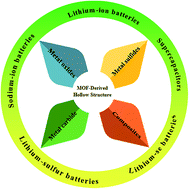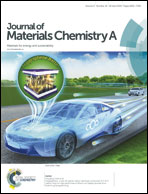Metal–organic framework derived hollow materials for electrochemical energy storage
Abstract
Metal–organic frameworks (MOFs), a novel class of porous crystalline materials, have drawn enormous attention. Due to the inherent porosity and presence of both metal and organic moieties, MOF-based materials are naturally suitable as versatile precursors and sacrificial templates for a wide variety of metal/carbon-based nanostructured materials, such as metal oxides, metal carbides, metal sulfides and their composites. Recent developments in MOF-derived hollow nanostructures with well-defined interior voids and low density have revealed their extensive capabilities and thus give enhanced performance for energy storage and conversion. In this review, we summarize the recent progress in the fabrication of MOF-derived hollow materials and their applications for energy storage, particularly for lithium-ion batteries, sodium-ion batteries, lithium–Se batteries, lithium–sulfur batteries and supercapacitors. The superiorities of MOF-derived hollow materials are highlighted, and major challenges or opportunities for future research on them for electrochemical energy storage are also discussed, with prospective solutions in the light of current progress in MOF-derived hollow nanostructures.

- This article is part of the themed collections: Recent Review Articles and International Year of the Periodic Table: Elements for Next Generation Batteries


 Please wait while we load your content...
Please wait while we load your content...